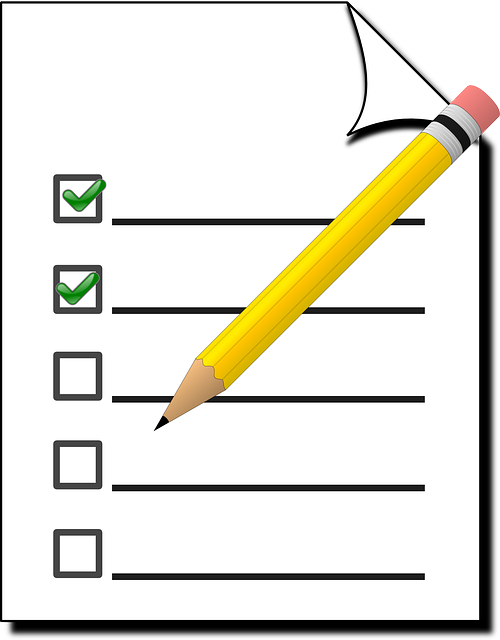
Discover powerful strategies to craft engaging survey questionnaires. Learn expert tips, avoid common pitfalls, and gather valuable insights effortlessly. Elevate your research game now!
Table of Contents
Introduction
Researchers, marketers, and business professionals conduct surveys and questionnaires, so they need to be precise. When executed professionally, surveys offer excellent insights into consumer preferences, market trends, and public opinion. This ultimate guide will help you focus on the main steps needed to ensure that your surveys result in valid data and that you can act on them.
1.Clarifying Your Research Goals
Before creating a survey, it is essential to define research objectives. This is the first step in handling survey questionnaires effectively. Here are the key points to think about
- Identify the problem or question you want to investigate
- Items that you need to collect for planning
- Quantify your targets for your survey
- Assess the possible implications of your findings
A clear goal will help you formulate focused, productive survey questions. Remember that a clearly articulated purpose will drive your entire survey process and help you wean yourself off the collection of irrelevant or useless information.
2.Designing Effective Questions
The way we ask questions is the core of getting questionnaire surveys right. The following are some guiding principles:
- Ensure the questions are clear and jargon-free: Eliminate ambiguity and use straightforward language that everyone in the survey can understand.
- Ask closed-ended questions wherever you can: Closed-ended questions are easier to analyze and yield more standardized data.
- Be cautious of leading questions: Make sure your questions don’t lead respondents to a particular answer.
- Use open-ended questions judiciously: Although helpful for understanding the why behind the what, open-ended questions can take a long time to sift through.
- For rating scales, balance them out with an order that makes sense
- Keep similar questions together: This helps the survey flow better and makes it easier for respondents.
- Run a pilot test of your survey: Test your questions on a small group before going ahead and fully implementing them to identify issues.
3.Crafting practical survey questions

Use the “funneling” technique
Start with broad questions and gradually narrow them down to more specific ones. This approach helps respondents ease into the survey and provides a logical flow of information, resulting in more thoughtful and accurate responses.
4.Selecting the Right Sample

Oversampling can improve the representation of minority groups
When properly weighted in the analysis phase, deliberately oversampling underrepresented groups can ensure sufficient data for subgroup analyses and improve overall population estimates.
Selecting the proper sample is essential to ensure your survey results are correct. Take these into consideration:
- Determine your target population: Estimate how many responses you’ll need to achieve reliable results. Sample Size Calculator and similar tools can be helpful here.
- Adjust for non-response: Be prepared with more invites to offset non-respondents.
- Be mindful of demographics: Confirm your sample is representative of the diversity of your target population.
5.Implementing the Survey
Once the questionnaires are designed and samples selected, it is time to implement the survey. These are the best practices for completing surveys and questionnaires correctly:
- Choose the right platform: Use a survey platform like SurveyMonkey or Google Forms that meets your requirements.
- Be mobile-friendly: Make your survey readable and usable on smart devices.
- Be realistic: Allow respondents sufficient time to complete the survey without allowing them to forget about it.
- Give them a reminder: Politely remind those who have not yet responded to fill out the survey, but don’t be pushy.
- Monitor progress: Track response rates and implement any fixes needed while the study is active.
- Examining and Parsing Results
- When your data is on the table, it is time to interpret the results. This is, notably, one step in conducting surveys and questionnaires correctly and obtaining meaningful results.
- Preach: It is the response I sought as it was the bit I needed.
- Identify custom findings: Look for patterns and correlations in the data.
- Compare the results to the objectives to see how well the survey achieved your original research objectives.
- Explain limitations: Mention any potential biases or limitations in your survey methodology.
- Visualization: Charts and graphs can help make your discovery more digestible and manageable.
- Make your conclusions actionable: Use the insights you gleaned from your findings to formulate ideas for actions to take or next steps.
Conclusion
Designing and implementing survey questionnaires is not a straightforward task. Armed with the information in this guide, you’ll have the tools you need to craft surveys that result in honest, actionable insights. First, you must keep your goals SMART — Specific, Measurable, Achievable, Relevant, and Time-bound.
Don’t dismiss feedback from colleagues or experts when you want to improve your surveying skills. With enough practice (and the right amount of attention to detail), you can administer surveys that generate robust and meaningful data to help inform your decision-making process
FAQ
Q1: Why is accuracy important in survey questionnaires?
Accuracy in survey questionnaires ensures reliable data collection, leading to more trustworthy results and better-informed decisions.
Q2: How can I make sure my survey questions are clear?
Use simple language, avoid double-barreled questions, and ask one thing at a time. Test your questions with a small group before launching the full survey.
Q3: What’s the ideal length for a survey questionnaire?
Aim for a survey that takes 5-10 minutes to complete. Longer surveys may lead to respondent fatigue and less accurate answers.
Q4: How can I encourage honest responses in my survey?
Ensure anonymity, use neutral language in your questions, and avoid leading questions that might bias responses.
Q5: Should I include open-ended questions in my survey?
Yes, open-ended questions can provide valuable insights. However, use them sparingly as they take more time to answer and analyze.
Q6: How often should I conduct surveys?
The frequency depends on your goal. Quarterly or bi-annual surveys are common for tracking progress .You might survey more frequently for specific issues.
Q7: What’s the best way to distribute my survey?
Choose a method that effectively reaches your target audience. Online surveys are popular because they are convenient, but consider your audience’s preferences.
Q8: How can I increase my survey response rate?
Keep the survey short, explain its purpose clearly, send reminders, and consider offering a small incentive for completion.
Q9: What should I do with the survey results?
Analyze the data carefully, look for patterns and insights, and use the findings to inform your decisions or actions. Share relevant results with participants if appropriate.
Q10: How can I ensure my survey is unbiased?
Use neutral language, offer balanced response options, randomize question order when possible, and have others review your survey for potential bias before distribution.
